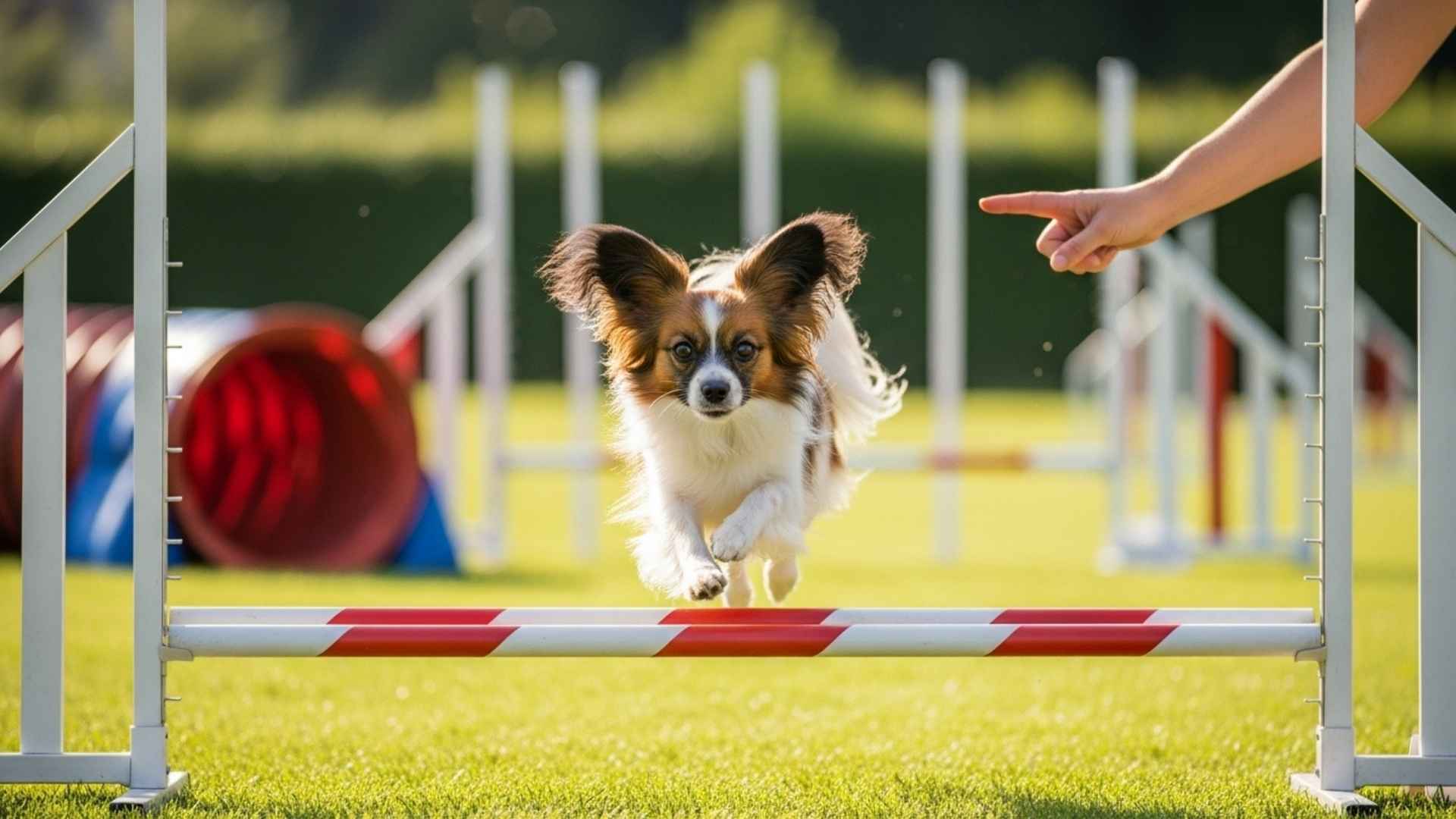Small dogs may be tiny in size, but their personalities are anything but small. These lively little companions are often more excitable and eager to please than their larger counterparts.
Quick learners with plenty of energy, they thrive on consistency, patience, and lots of love, making them highly responsive to positive reinforcement training.
What makes them so special is their adaptability. Whether you live in a busy city apartment or a cozy suburban home, these petite pups adjust beautifully. They’re easier to manage than many large, independent breeds and often become affectionate, obedient companions in no time.
Because of their size, however, small dogs can sometimes feel more vulnerable. That’s why gentle handling and positive, confidence-building training are key. With the right guidance, these little dogs blossom into happy, loyal, and endlessly charming best friends.
Let’s take a closer look at the small but mighty breeds that win hearts everywhere with their easy trainability.
Smallest Dog Breeds For Easy Training
1. Papillon
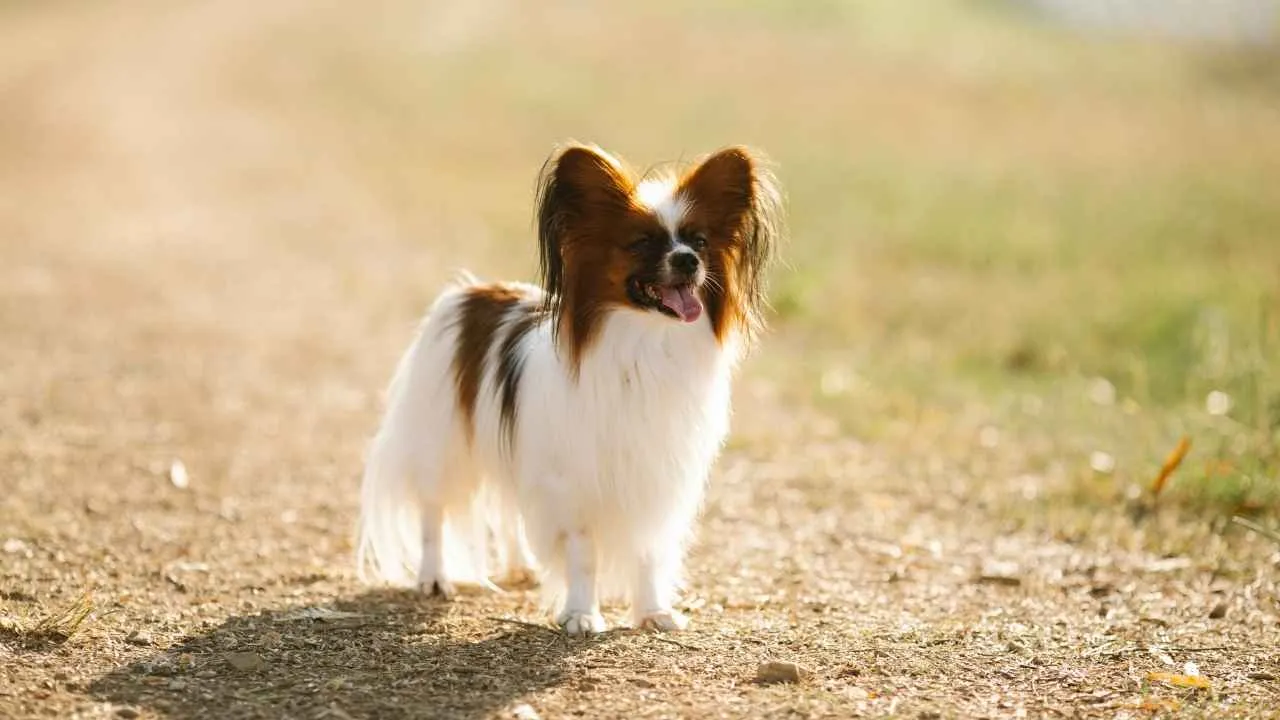
This quick, curious canine is a tiny dog equipped with beauty and athleticism. Also referred to as the butterfly dog or squirrel spaniel, it is a robust toy dog for all reasons and seasons.
Trainability:
Always eager to join the family fun, these bright, fun, friendly, and alert Papillons stand among the top-most intelligent breeds that pick commands and tricks faster than other breeds. These dogs are incredibly easy to train due to their eagerness to please and smart nature.
Papillon puppies start learning as early as 8 weeks old and can establish good habits early on. Rewarding them with treats, praise, and playtime when they exhibit desired behaviors is an effective approach to get them on board positively.
Consistency in commands and routines is crucial because these mischievous pups thrive on structure. The Papillons can also be a bit stubborn at times and test their owners’ boundaries and limits.
Hence, a lack of firmness in training is not ideal for this clever breed, which can easily manipulate owners and dissuade them from their path.
Grooming:
These dainty and elegant dogs with a plumed tail and long silky coat are truly a dog blessed with a hardy constitution. Grooming them can also be very easy due to their low-shedding single coat and no need for elaborate haircuts.
Exercise:
Papillons have a moderate energy level and a passion for working their small muscles out. Hence, 30–60-minute exercise equipped with shorter walks and play sessions is a great way to keep these pooches engaged.
Fun Fact:
Did you know? Titian or Tiziano Vicelli painted these small pups resembling Papillons, with many companion dogs existing in the mid-1500s. Hence, these pups with butterfly wing-shaped ears have existed for pretty long ago.
2. Toy Poodle

Poodles of all sizes are eager, athletic, and wickedly smart dogs of remarkable versatility. This miniature hypoallergenic breed is appreciated by people with allergies that appeared in circuses in France around the early 1900s.
Trainability:
Orvis states that this national dog of France, with its rounded tufts of hair on their legs, hips, and tail tips called pompons, was a retrieving water dog and duck hunter in Germany. These puppies do have an off-the-charts intelligence that makes them an incredibly easy-to-train breed.
Toy poodles are active dogs, for whom puzzle-solving toys and interactive play sessions are the best form of motivation to make them learn advanced tricks and make headway in some behavioral training.
Grooming:
This city-dwelling companion dog is highly transportable, convenient to handle, and groom. Just brush your toy poodle’s coat with a slicker brush every other day to prevent mats and tangles, and bathe these puppies every 4 to 6 weeks to keep these appealing dogs in good condition.
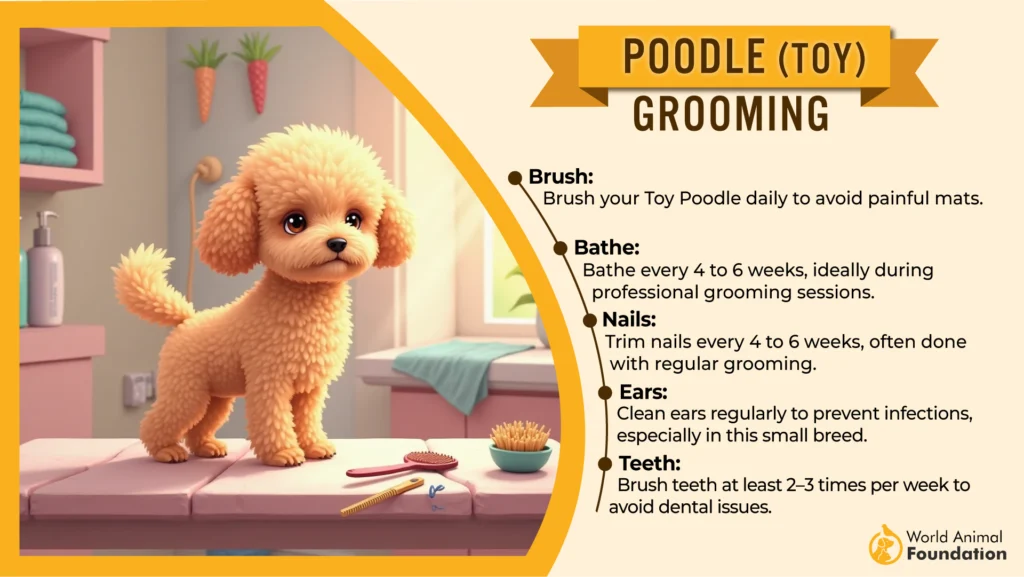
Exercise Needs:
You’ll often find the flamboyant poodles splashing and swimming in the water. Accompanying their owners on nature trails and ruling the fashion runway with their endless fashionable haircuts.
Fun Fact:
Did you know? Poodles have long been associated with the European circus tradition and are natural entertainers with showy looks and high trainability. Moreover, their excellent long noses brought them an additional job as truffle hunters.
3. Yorkshire Terrier
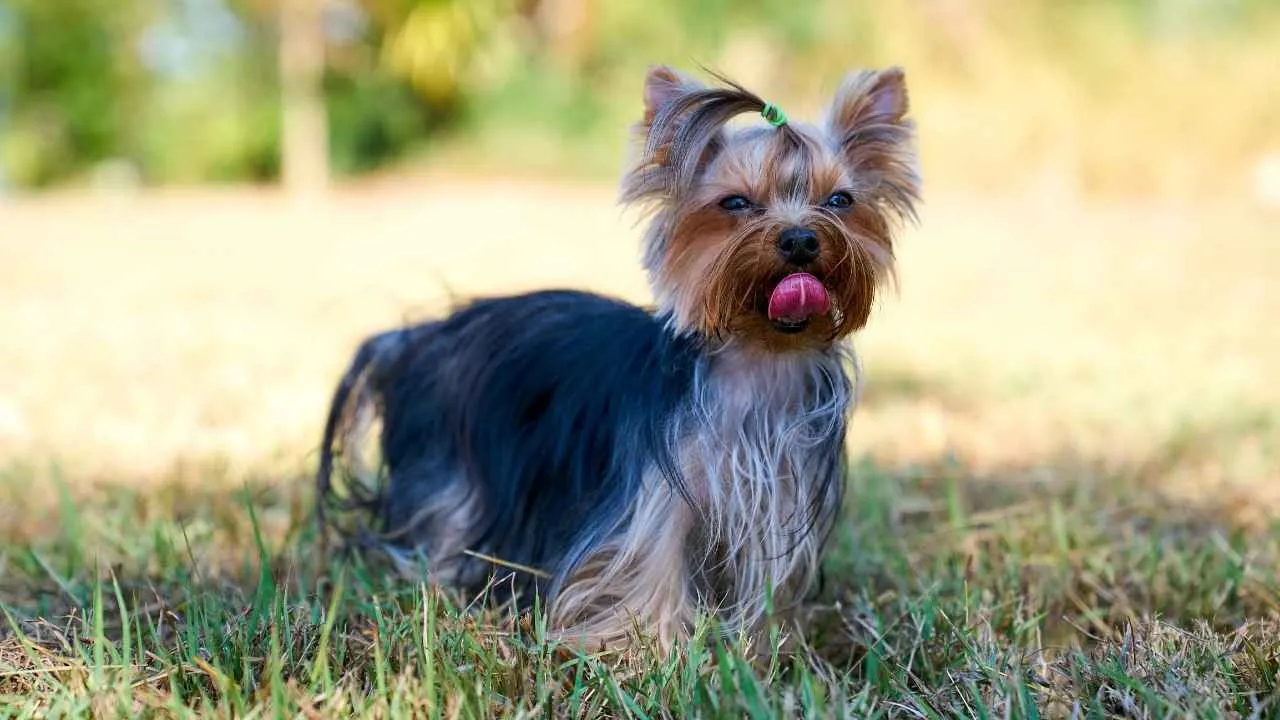
These surprisingly brave, affectionate, playful, sprightly, tomboyish dogs originated in England to be tenacious rodent hunters. But they are nowadays enjoying life as a pampered family pet.
Trainability:
These intelligent and energetic dogs also have a stubborn streak. Hence, start training them early on and don’t let their daintiness fool you, as they will need a lot of training to eliminate their bossy tendencies.
Grooming:
This dainty, glossy Yorkshire terrier with a floor-length hypoallergenic coat is studded with humanlike hair rather than doggie fur, which is incredibly low shedding and easy to groom and maintain.
Exercise Needs:
The feisty Yorkies have enough energy to power a small American city. Hence, they require at least 30 minutes to 1 hour of physical activity.
Fun Fact:
Did you know? This true personality breed that provides years of laughs, love, and companionship is a favorite among urbanites and is a popular pooch in many American cities.
4. Russian Toy
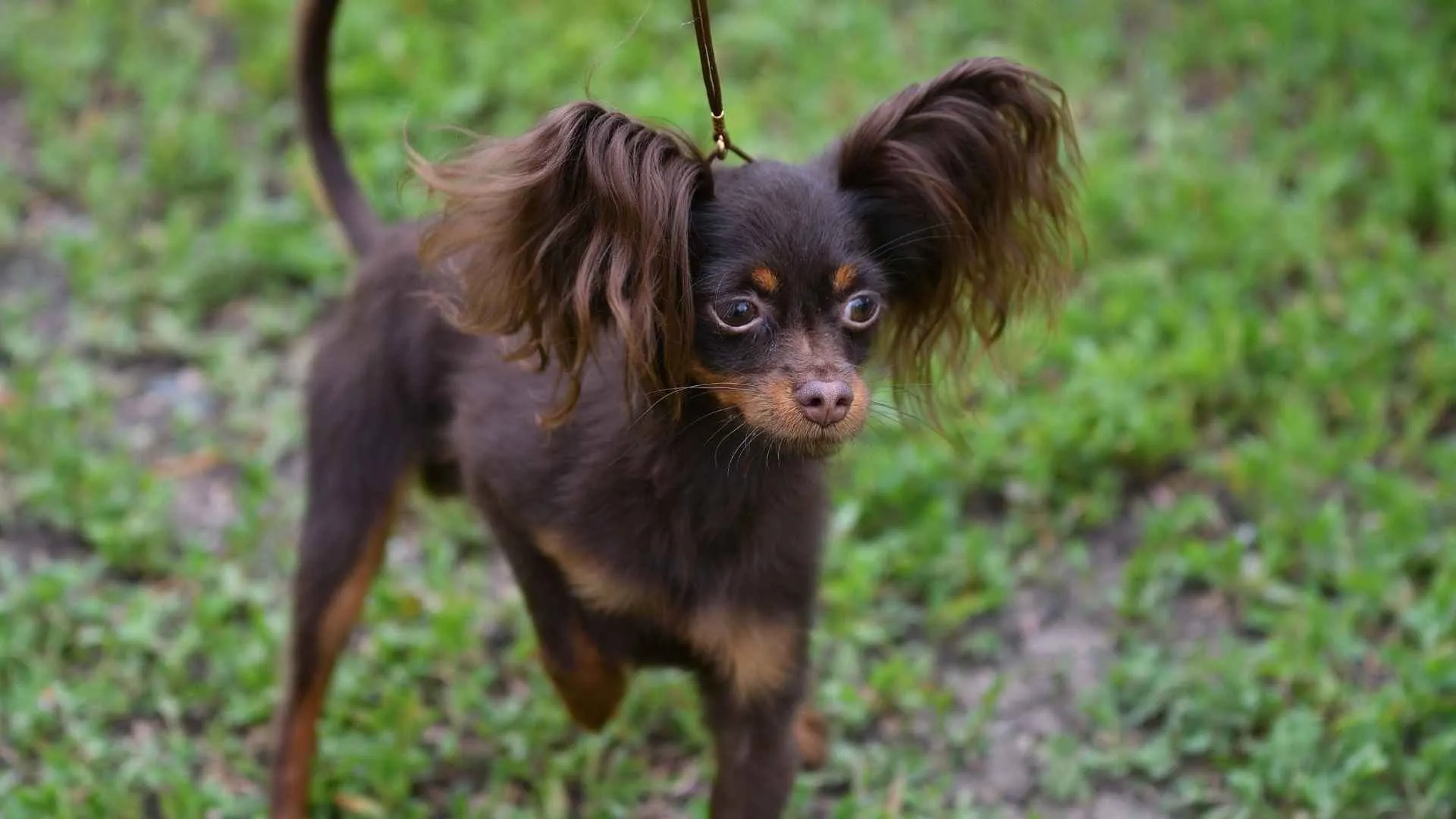
This small, elegant package of long legs, fine bones, and lean muscles comes with ponytail ears, ebony gumdrop noses, and round eyes. It is an aristocratic toy breed with Russian lineage. This good-natured imp loves to run and play, with a cheerful disposition on which you can lean every day.
Trainability:
This snuggly companion with a desire to please is equipped with keen intelligence, which makes training an easy task. They just feel like they are the prized jewel in your home, and you have already won them over.
They thrive on human companionship and cannot bear neglect; hence, praise and attention will make these dogs do whatever you want them to do.
Grooming:
Purina says equipped with gloriously beautiful foxlike red sables and brown to black and tan coats and a larger-than-life personality. Russian toys are not difficult to groom and maintain; just a bit of weekly brushing to prevent mats and tangles can suffice.
Exercise Needs:
You’ll often find these small Russian pups dashing through the house or backyard, chasing toys or happily lounging in your lap all day long. Minimal exercise with a few short walks and play sessions can suffice.
Fun Fact:
Did you know? These Russian dogs have English roots going all the way back to when the first English toy terrier arrived in Russia in the 18th century. The evidence of which can be seen in the Zoological Museum in St. Petersburg.
5. Havanese
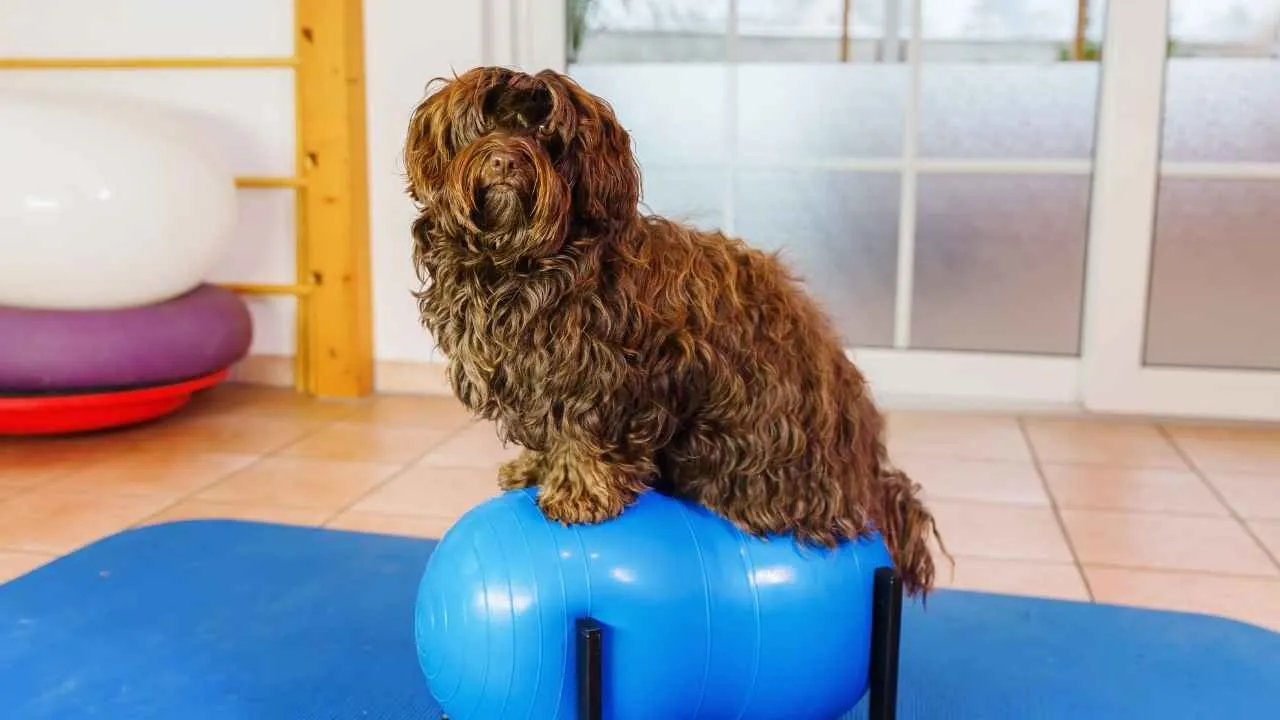
These outgoing, funny, and intelligent dogs with a spring in their step and gleam in their big brown eyes are vivacious and sociable companions that are extremely popular with American city dwellers.
Trainability:
These small but sturdy, adaptable dogs have incredible social skills due to which they garner a lot of attention and admiration from every passerby, whether young or old alike.
Moreover, the Havanese dogs are smart, highly trainable extroverts with a comical attitude, which makes them look like born clowns and natural tricksters.
Grooming:
These pups with a curled-over tail and gorgeous silky coat look cute no matter what hairdo you give them. Hence, you can cord their coat like a puli whenever you have time on your hands or clip it short whenever you want an easy fix for keeping them maintained.
Exercise Needs:
A bare minimum of 30 minutes of work and play is required to keep these cheery pups happy. They love to stroll around the neighborhood asking people how they are doing due to their inherent social skills, and will enjoy some playtime in the local park. Moreover, you can also try obedience training and flyball with these petite pups.
Fun Fact:
You might be surprised to know that this national dog of Cuba is the descendant of the now extinct Bichon Tenerife and Blanquito de la Habana (little white dog of Havana) that came to American soil during the Cuban Revolution.
6. Brussels Griffon
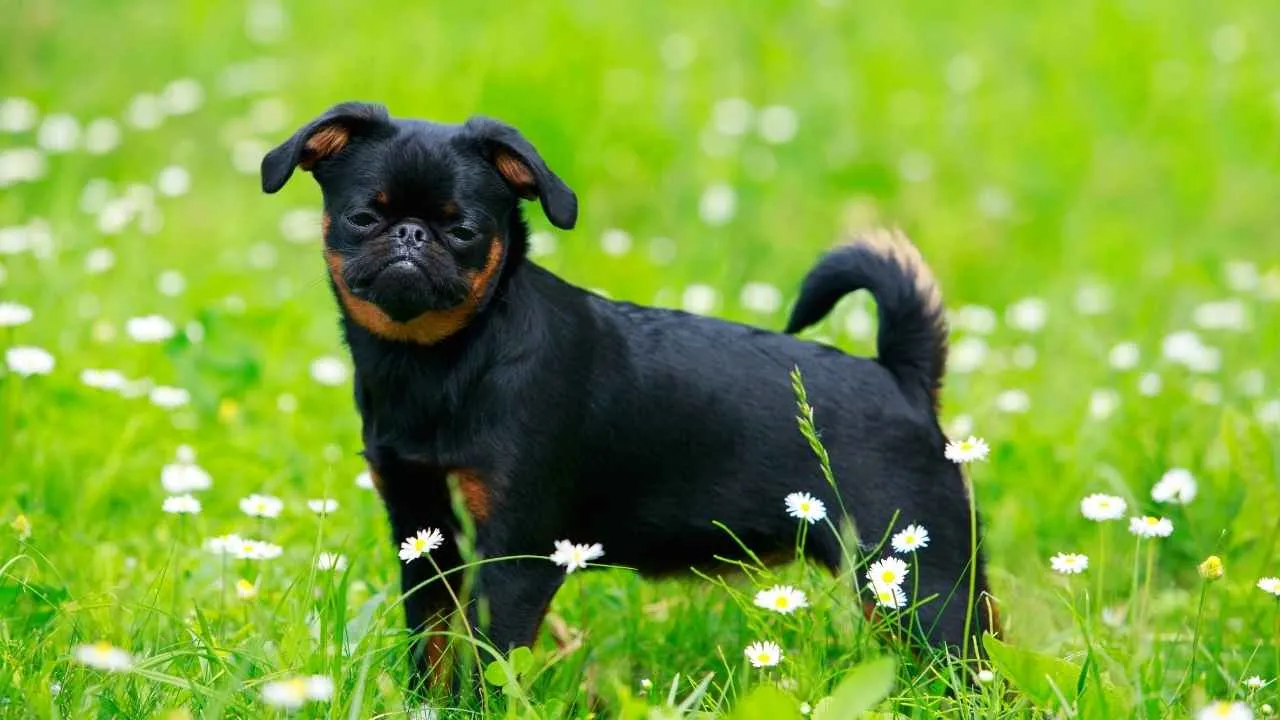
This human-like toy with a complex character is a sensitive companion for discerning grown-ups. The Brussels griffon is a smart, devoted, alert, and sociable breed with an air of worldly human-like wisdom.
Trainability:
Continental Kennel Club notes that these royal favorites of Henrietta Maria happen to be a melting pot of many breeds, like Pugs, English toy spaniels, Yorkshire terriers, and an old Belgian breed called Brabancon.
Moreover, these thickset and sturdy dogs not only look wise, but they are also easily trained due to their sensitive nature and love for sticking close and pleasing their humans.
Grooming:
With a risk of getting smitten by gazing into his big, human-like eyes. This fringed beard, mustache, and cute whisker owning fella needs regular grooming and daily brushing to remove loose hair and prevent skin irritation.
Exercise Needs:
The Brussels Griffon moves with a purposeful trot, giving the impression it knows what it wants. Moreover, this pup is a playful and energetic breed that appreciates a 30–60-minute romp divided into two separate sessions.
Fun Fact:
This Griff, with an aura of a French-speaking professor, has a legendary tale that starts in the capital City, Brussels, in the 1800s, where this Griff began his rise from a rough and tumble rat dog to a lapdog companion.
7. Shih Tzu
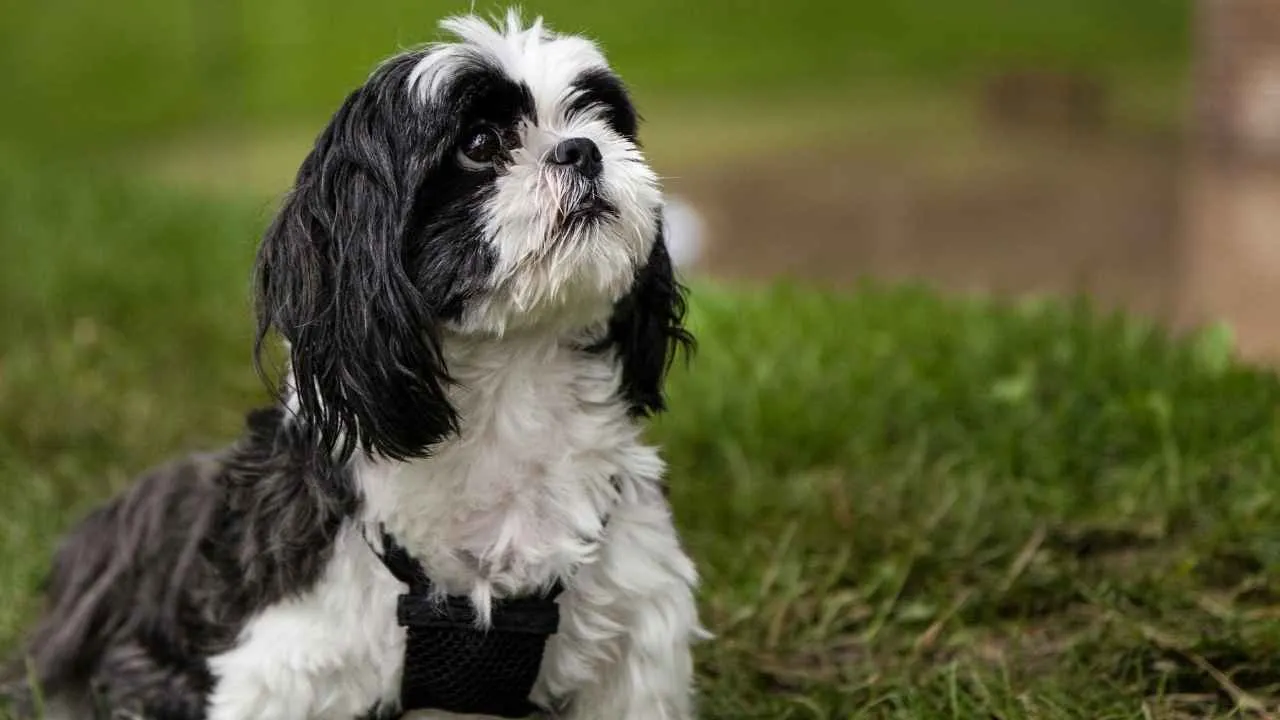
This giggling, mischievous lion dog graced the world with its presence a thousand years ago and is a surprisingly solid, flat-faced, lively charmer that used to spend most of its days inside royal palaces in China. The AKC says only a few dogs are as beautiful as a well-groomed Shih-tzu.
Trainability:
Early socialization, patience and consistency in training along with short creative training sessions, establishing a proper routine, use of positive reinforcement, and starting basic training early can make this Shih Tzu grow up into a well-adjusted, less fearful, and non-aggressive dog.
Grooming:
A moderate amount of grooming every 4 to 6 weeks can prevent tangles, matting, and potential skin issues. Moreover, brushing their long strands of silky hair and regular baths help keep this sweet puppy clean and smelling fresh.
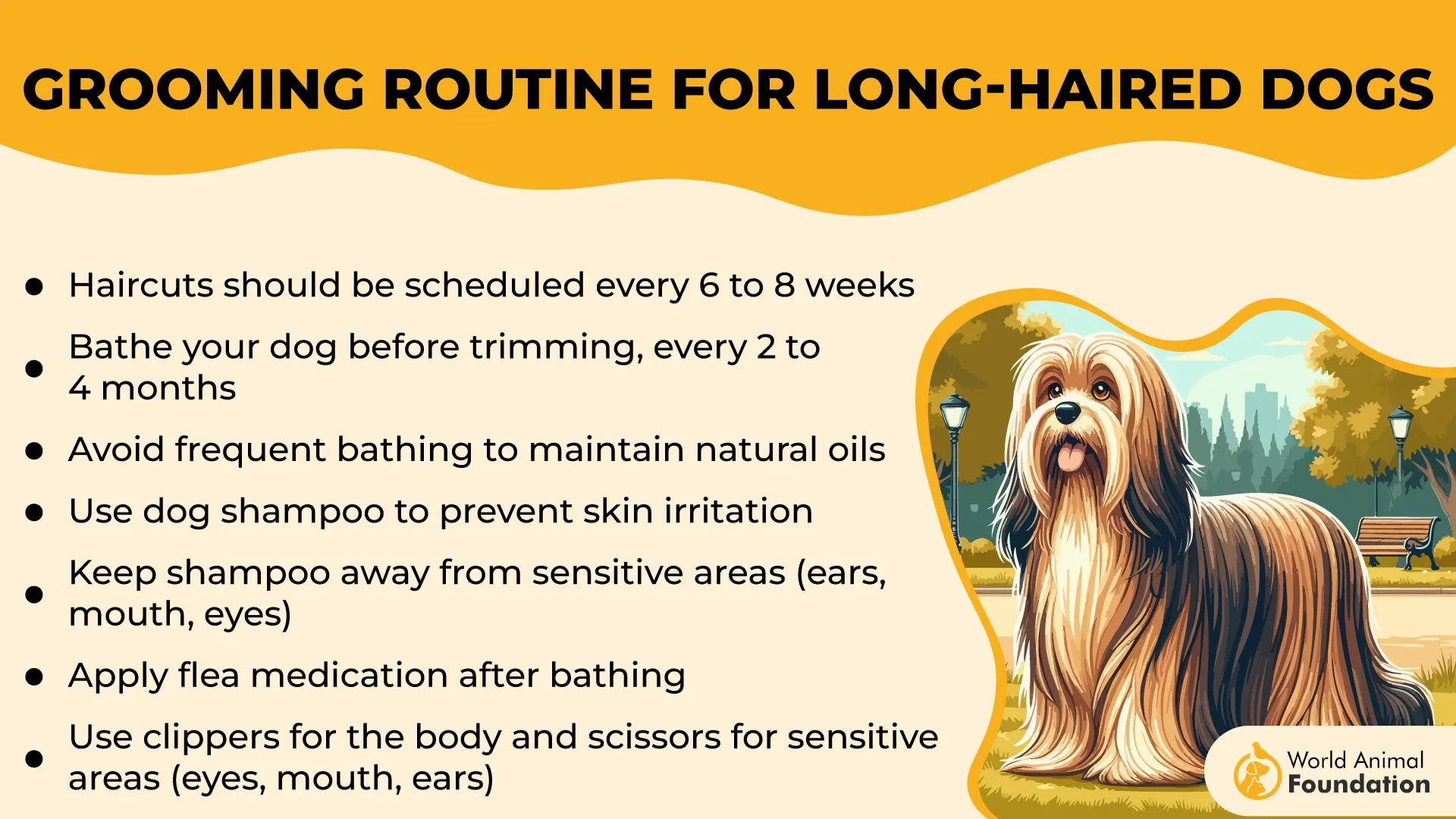
Exercise Needs:
Even though these beautiful and affectionate puppies seem fragile. But they are actually incredible agile dogs that have remained pets for notable personalities like Queen Elizabeth II and Miley Cyrus. They need around 30-70 minutes of daily exercise, depending on their health and mobility.
Fun Fact:
Did you know? These breed that remained hidden behind Chinese palace walls was developed centuries ago from Tibetan breeding stock and are possibly a cross between older Sino-Tibetan breeds like the Lhasa Apso and Pekingese.
8. Pug
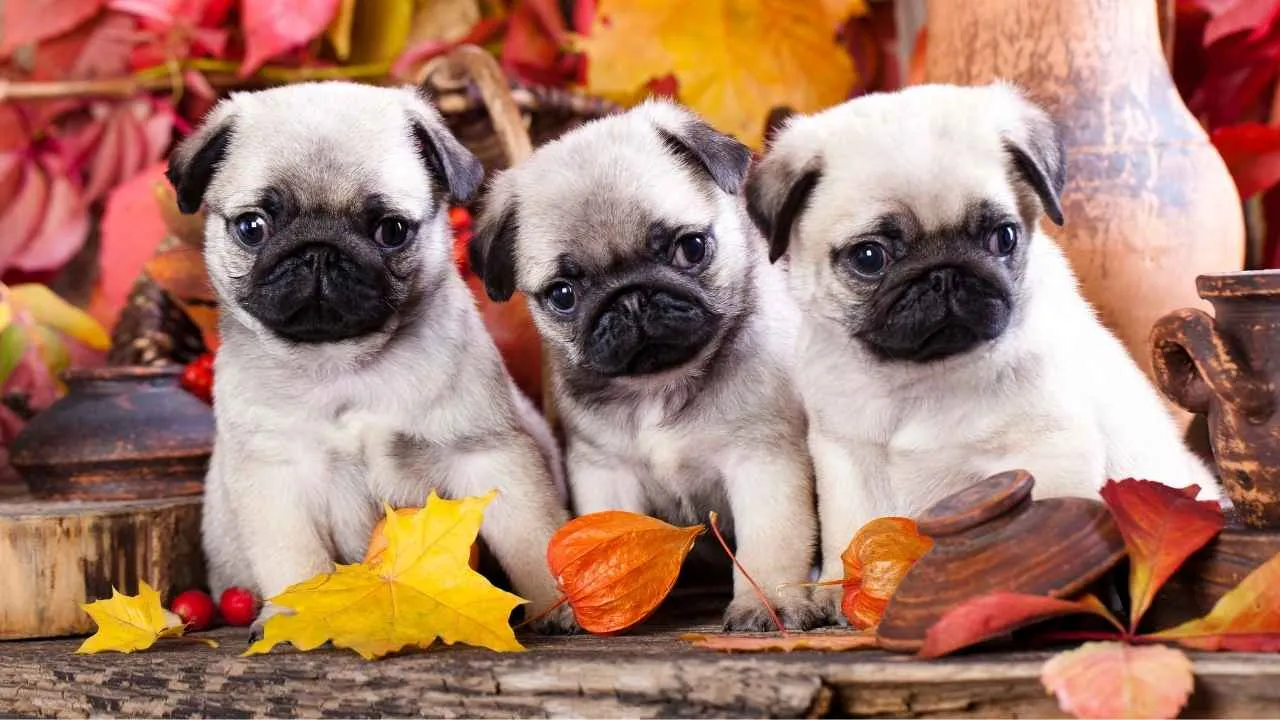
Small in stature, chill in demeanor, and low on exercise needs, the grumbling Pug is a lovable charmer that was once a mischievous companion of the Chinese emperor.
This small yet solid muscular dog is a curious and happy, laid-back pup. That will gladly bow at your feet and snuggle close to you while it sleeps.
Trainability:
Adored by millions of fans, this ideal house dog is a highly food-motivated and trainable breed. Just add a bit of structure, consistency, and a bit of creativity, and the intelligence and personality of this pup will shine through.
Grooming:
This master of emotions needs to be brushed at least once a week to manage their shedding and keep their coat healthy. Moreover, in shedding season, you’ll have to increase the frequency to a few times per week.
Exercise needs:
This cuddly dog would rather lounge on a couch with the air-conditioning on high than go explore the great outdoors. But it does need a light to moderate cardio and at least a 20-minute walk daily to retain its good shape.
Fun Fact:
Did you know? VCA Animal Hospitals vouches for this lovable Pug who became the mascot of Holland’s royal house of Orange when a Pug saved the life of the Prince of Orange by barking to warn him of an attack on his camp by the Spanish troops.
9. Dachshund
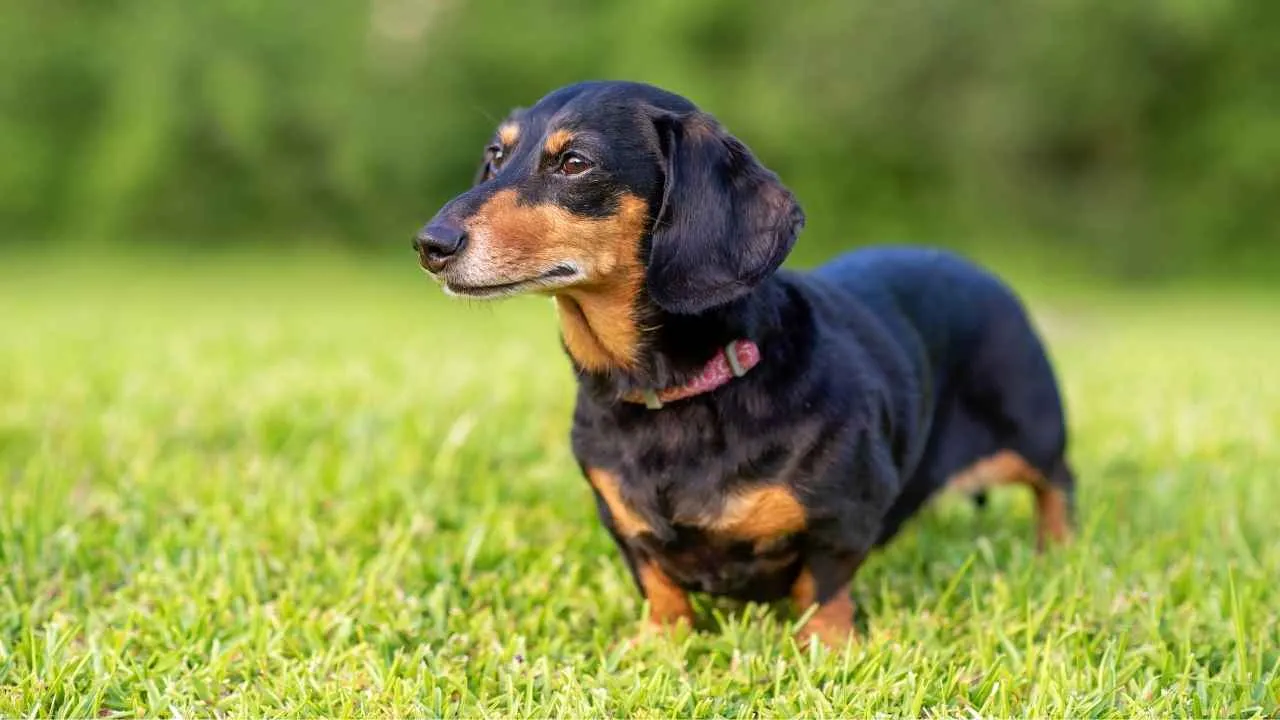
Bold, vivacious, and curious with a good bit of added spunk, this low-lying long Dachshund is a super pup with little legs and a big personality.
These smart, vigilant watchdogs with a big dog bark and independent hunting personality are brave to the point of rashness and endearing to the point of no return. Also equipped with a stubborn streak and available in three coat varieties, this German pup is one to watch.
Trainability:
These highly intelligent, fast learners are always determined to follow your instructions. Especially if you keep them motivated with positive reinforcements and encouraging lessons.
Grooming:
Brushing every once or twice a week and bathing every three months or as needed can prevent matting, tangling, and skin issues in the long-bodied Dachshund.
Exercise Needs:
A picture of cleverness, courage, perseverance, and strength, the Dachshunds need around 60 minutes of exercise daily.
Fun Fact:
These German badger dogs have a history that goes back 600 years. These Dachshunds are a national symbol of Germany and were once called Liberty Hounds by American fanciers during World War I.
10. Cocker Spaniel
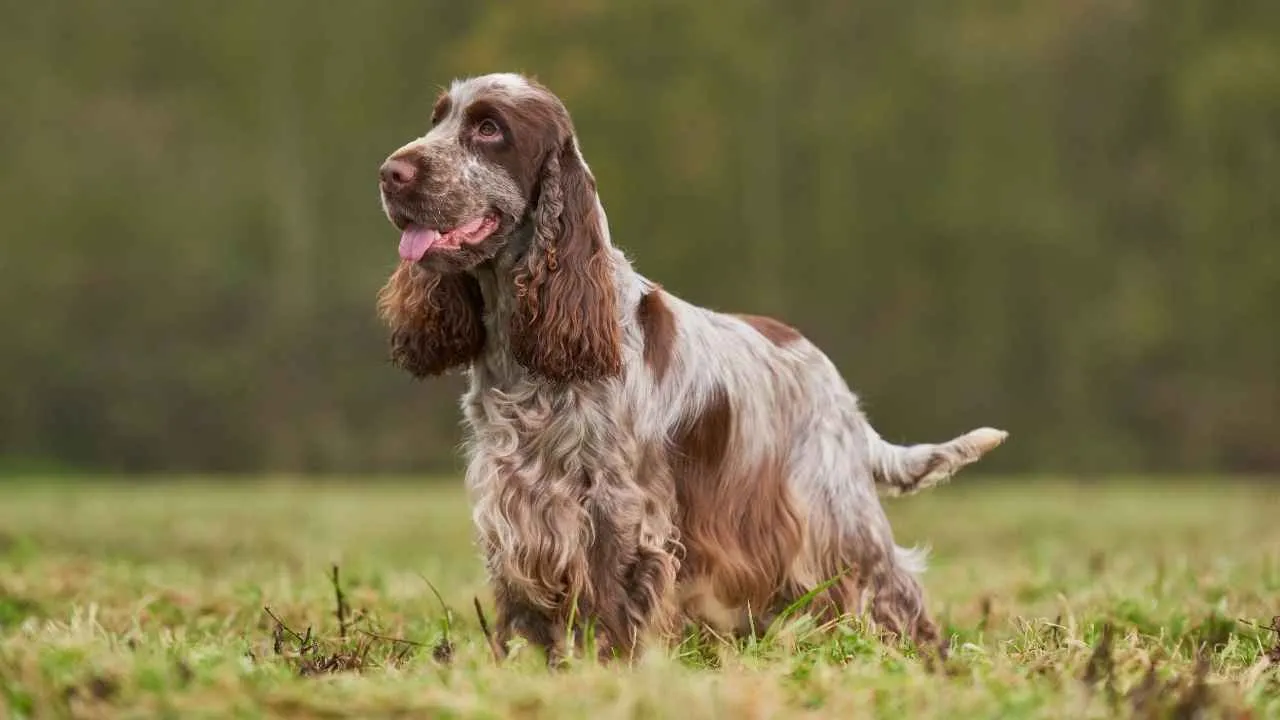
This merry and frolicsome dog with big, dreamy eyes and an impish personality is an all-around companion and one of the world’s best-loved breeds.
This lively sporting dog, with its long silky ears, is the perfect mix of sporty and compact; athletic enough for play but small enough to carry along. And to top it off, it’s one of the prettiest pups you’ll ever see.
Trainability:
These playful dogs are a joy to train and make great companions and athletes. Cockers are intelligent, loving, and strongly inclined to please their owners, which makes training these dogs a cake walk.
But know this that these pups don’t appreciate harsh treatment. Hence, soft and gentle guidance is key to cracking the training code for this beautiful puppy.
Grooming:
A set routine of brushing every 3-4 weeks, along with bathing every 4-6 weeks or after every muddy walk, and professional grooming every 6-8 weeks for trimming and sanitary care can help prevent mats, reduce skin issues, and keep the feathers of this bird dog sleek.
Exercise Needs:
These well-balanced, sturdy, solid, gundogs are quick, durable pups with a smooth and easy gait who need around 60 to 90 minutes of exercise and play every day to fulfill their physical and mental stimulation requirements.
Fun Fact:
Did you know? PetMD says that this breed of great antiquity is believed to have originated in Spain and was a bird hunter’s helper before the development of the rifle, and was used in tandem with the nets. These pups are named cocker spaniels due to their specialization in hunting woodcocks.
Conclusion
The American Kennel Club negates the fact that small dog breeds need less training than large dog breeds. Emphasizing the fact that whether small or large, a dog not trained can showcase behavioral issues that can be detrimental, regardless of how big or small these canine companions are.
The AKC also mentions that these small dog breeds are often misinterpreted as easy-going and laid back due to their small size. But they are, in truth, the most peppy and sprightly personalities of the canine kingdom.
These small dogs have delighted owners for centuries and still continue to do so. They are highly prized treasures that harbor worldwide fascination from the royal and common folks alike. These legendary mascots of royal households began a craze for small breeds globally, and their popularity can be gauged by the fact that these pooches bring together city and country dwellers and the elderly and young on one platform due to their adorable presence.
Hence, if you are looking for more options of small, sweet puppy-like dogs, check out other breeds like the bichon Frise, Maltese, Bolognese, French bulldogs, Chinese crested, Peruvian inca orchid, and Boston terrier.


